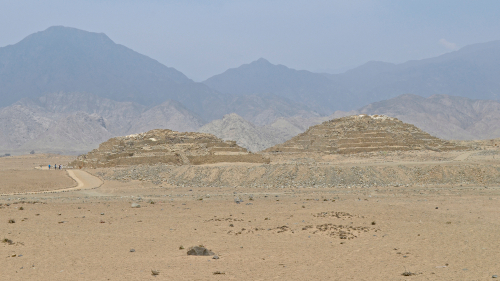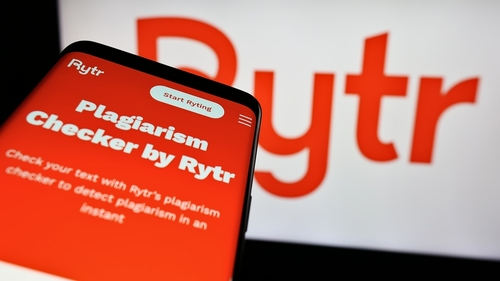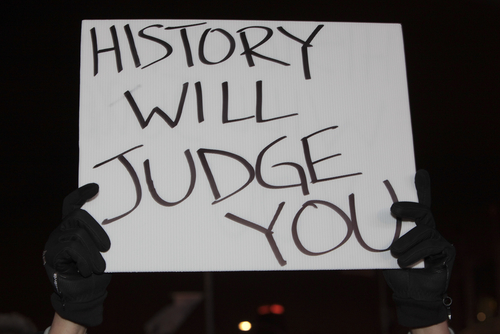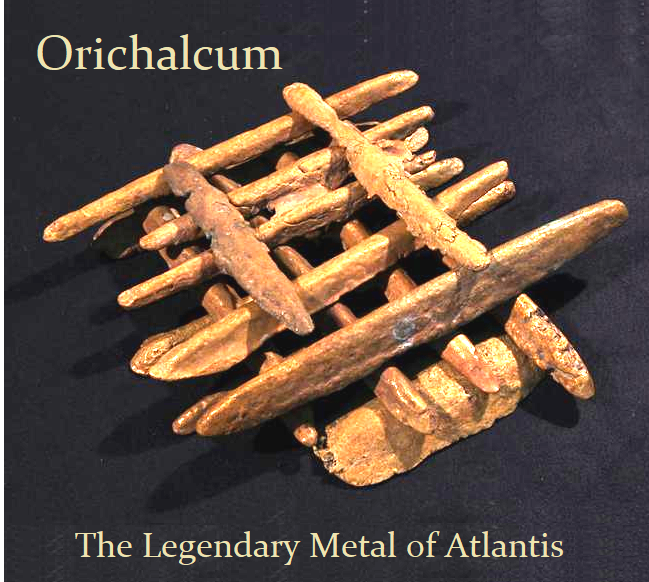
QUESTION: Mr. Armstrong; I was discussing the history of money with a professor at our university where they have a display of coins. I asked why were there no Egyptian coins. He referred me to your site and said that you are the expert in the world monetary system. I read your piece on the Egyptian deben monetary system. The Egyptians began with a representative money rather than coins. Is this the oldest civilization with pyramids and paper money?
JY

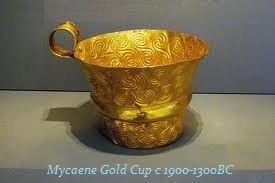 ANSWER: From a monetary perspective, the Egyptian monetary system is by far the first representative form of money. In other words, they used a derivative of paper money proving that money also need not be tangible as has been the case in modern times. The central element of any monetary system hinges upon whatever the people “believe” has value. In Egypt, gold was seen as the tears of god and was reserved EXCLUSIVELY for royalty. Gold did not serve as any sort of medium of exchange until about 700 BC. Why? For anything to serve as the medium of exchange it must exist in sufficient quantity. As long as gold was rare, it was exclusively the property of kings and represented a luxury with no PRACTICAL value whatsoever.
ANSWER: From a monetary perspective, the Egyptian monetary system is by far the first representative form of money. In other words, they used a derivative of paper money proving that money also need not be tangible as has been the case in modern times. The central element of any monetary system hinges upon whatever the people “believe” has value. In Egypt, gold was seen as the tears of god and was reserved EXCLUSIVELY for royalty. Gold did not serve as any sort of medium of exchange until about 700 BC. Why? For anything to serve as the medium of exchange it must exist in sufficient quantity. As long as gold was rare, it was exclusively the property of kings and represented a luxury with no PRACTICAL value whatsoever.
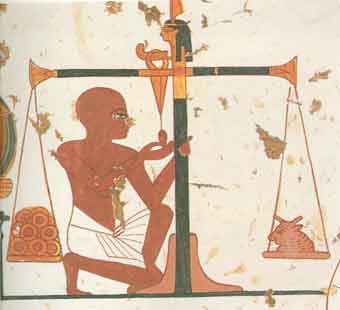 Egypt’s monetary system began with barter. It was primarily based on agriculture – grain. This evolved into official Graineries and a farmer would then take his crop to the Grainery and receive a receipt. With time, the monetary system evolved where people would then accept these receipts (paper money) in payment.
Egypt’s monetary system began with barter. It was primarily based on agriculture – grain. This evolved into official Graineries and a farmer would then take his crop to the Grainery and receive a receipt. With time, the monetary system evolved where people would then accept these receipts (paper money) in payment.
The huge difference between Egypt and Mesopotamia can be seen through the monetary system. The earliest use of metal appears to be in Mesopotamia cast in the form of silver rings. In ancient Egypt, silver was probably more expensive than gold which was rather common after the exploitation of the Numbian mines. Evidence supporting this idea comes from a New Kingdom Period wall painting depicting a man weighing big gold rings which were discovered in Thebes. This is the Deben Monetary System.
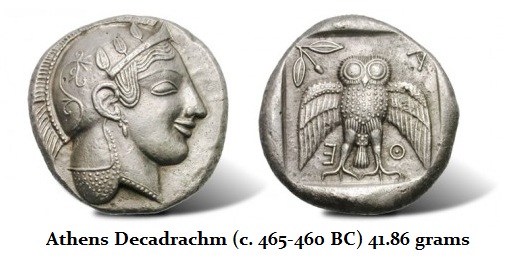 Eventually, gold rings became customary to carry out trade with the outside world. So we tend to find the beginning of a two-tier monetary system using grain receipts for local small transactions and gold rings for international payments of a higher monetary value. We see this type of two-tier monetary system throughout the ancient world right into modern times. Ancient Athenian Decadrachms are traditionally discovered around the Mediterranean seaport rather than in Greece reflecting they were high denominations used in international trade. Bretton Woods used gold dor international payments and paper money for domestic US transactions when gold was illegal for citizens to possess. The two-tier monetary system lasted in modern times up until August 1971.
Eventually, gold rings became customary to carry out trade with the outside world. So we tend to find the beginning of a two-tier monetary system using grain receipts for local small transactions and gold rings for international payments of a higher monetary value. We see this type of two-tier monetary system throughout the ancient world right into modern times. Ancient Athenian Decadrachms are traditionally discovered around the Mediterranean seaport rather than in Greece reflecting they were high denominations used in international trade. Bretton Woods used gold dor international payments and paper money for domestic US transactions when gold was illegal for citizens to possess. The two-tier monetary system lasted in modern times up until August 1971.
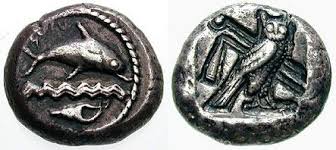 To make trade between Phoenicia and Mesopotamia easier they created a system that could have been based on the traditional Egyptian measurement known as deben that was equal to about 86 grams, which would exchange for 12 shekels used by Babylon and Phoenicia of about 7.2 grams per unit. Pictured here is a dishekel of the Phoenician city of Tyre, which is believed to be the earliest known coin circa 450-425BC. The date of the first Phoenician coins is uncertain. The earliest date generally accepted by scholars is about 450 BC and initially, the coins were all silver with weights based on variations of the Babylonian shekel of 7.2 grams. The most interesting aspect is that Phoenicia possessed no precious metal mines. The source of their silver came from trade with distant mines in Spain and possibly Sardinia. The motif is that of a dolphin riding the waves and the reverse with the wisdom of the owl.
To make trade between Phoenicia and Mesopotamia easier they created a system that could have been based on the traditional Egyptian measurement known as deben that was equal to about 86 grams, which would exchange for 12 shekels used by Babylon and Phoenicia of about 7.2 grams per unit. Pictured here is a dishekel of the Phoenician city of Tyre, which is believed to be the earliest known coin circa 450-425BC. The date of the first Phoenician coins is uncertain. The earliest date generally accepted by scholars is about 450 BC and initially, the coins were all silver with weights based on variations of the Babylonian shekel of 7.2 grams. The most interesting aspect is that Phoenicia possessed no precious metal mines. The source of their silver came from trade with distant mines in Spain and possibly Sardinia. The motif is that of a dolphin riding the waves and the reverse with the wisdom of the owl.
Now, just to address your comment that Egypt has the oldest pyramids, that is an incorrect statement. Caral has the distinction of being the oldest known city in the Americas and one of the oldest in the world. In fact, the Caral Pyramids were built approximately 5,000 years ago and they are actually OLDER than the Egyptian pyramids by around 100 years. They predate the Inca Pyramids by some 4000 years. Like other pyramids in history, the Caral pyramids are believed to have religious significance. There are six total pyramids.
The Norte Chico civilization flourished between the 4th and 2nd centuries BC. It appears to have been simply a barter civilization, yet there are many mysteries yet to be solved. For instance, there remain some very curious questions unanswered such as why are there no surviving evidence of ceramics? They appear to have used gourds instead of ceramics. Gourds may be good for storage and drinking or eating, but would not function as pots for cooking. There appears to also be missing any evidence of agriculture so it is possible they never eat bread. We do know that they used blue whale vertebrae as stools suggesting that they lived off the sea. It is entirely possible that they eat fish raw like the Japanese.
On some of the gourds, figures have been discovered which may represent a deity. Very few have survived but they may represent some form of a god reflecting a religious belief system that appears to be common to all civilizations. There is also no sign of significant surviving art perhaps because they were made from organic material, which did not survive.

